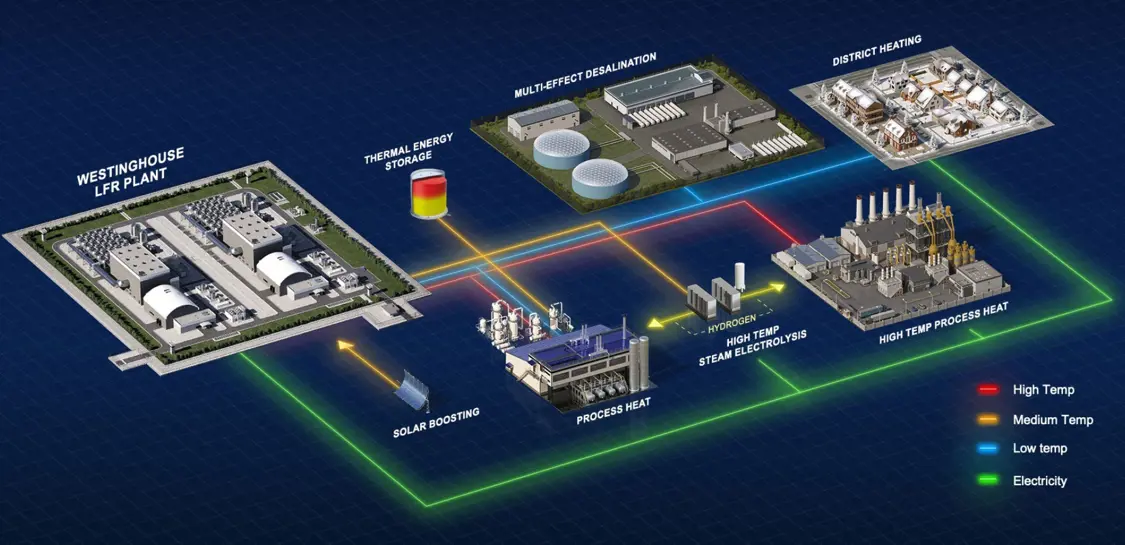Versatility of Application
LFR serves a wide variety of decarbonizing initiatives beyond low-cost electricity
The first is integral energy storage which couples Westinghouse’s proprietary, low-cost thermal storage directly into the existing turbogenerator to efficiently deliver load following capabilities with unmatched levelized cost of storage. This allows provision for grid services on electrical systems containing large numbers of non-dispatchable resources. Further, the LFR’s unique integration of energy storage permits auxiliary solar boosting using low-cost parabolic solar collectors, providing a low-cost way to bolster the output of the plant using existing systems and equipment.
In non-electric applications, LFR has the capability to generate radiologically clean steam at much higher temperatures (500-630°C) than traditional nuclear plants, thus permitting delivery of process heat services beyond those that are already within the capabilities of traditional nuclear power plants. In addition, should an even higher temperature be needed by a customer, electric superheating of steam to elevated temperature would still be possible and economical due to LFR’s anticipated low cost of electricity.
Also deriving significant benefit from LFR’s low cost of electricity is hydrogen production using high temperature steam electrolysis. This process uses inputs of steam and electricity and operates at high temperatures to produce hydrogen more efficiently than traditional low temperature electrolysis. As electricity represents well over 90% of the input energy from the plant, the ability to generate low-cost electricity is one of the most significant economic drivers of a low levelized cost of hydrogen. The LFR also benefits this technology by allowing eased direct extraction of LFR’s radiologically clean secondary side steam without any reboilers, greatly simplifying integration between the two plants.
Lastly, LFR’s design considers low-grade heat extraction from the turbine’s low-pressure zone. While not unique in thermodynamic characteristics, the radiological purity and up-front design considered significantly ease integration into district heating, multi-effect desalination, and other low-temperature uses.
With the exception of load following, which is a key capability of the reference plant design, integration of the above-mentioned services in the Westinghouse LFR is driven by customer needs.




